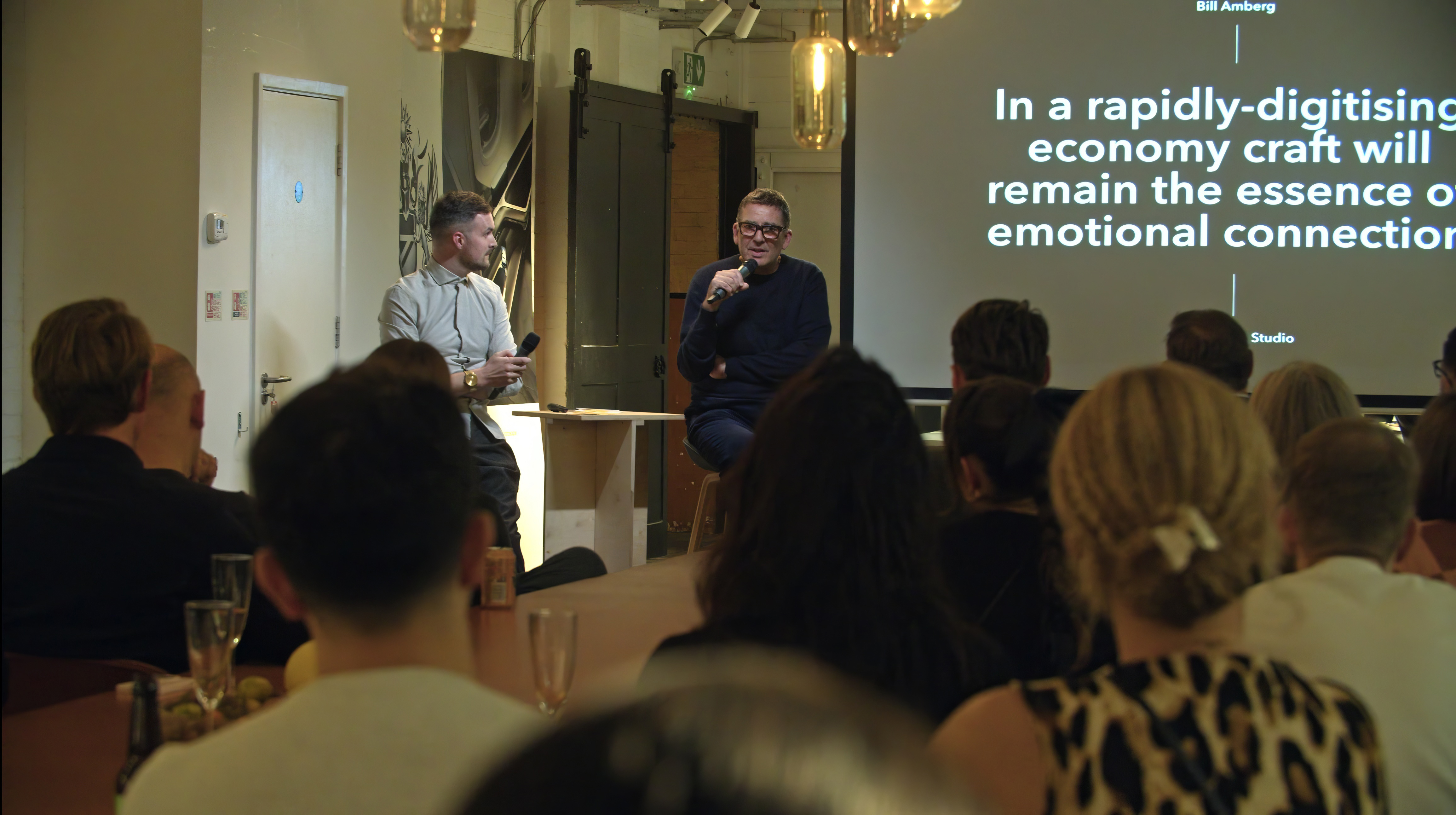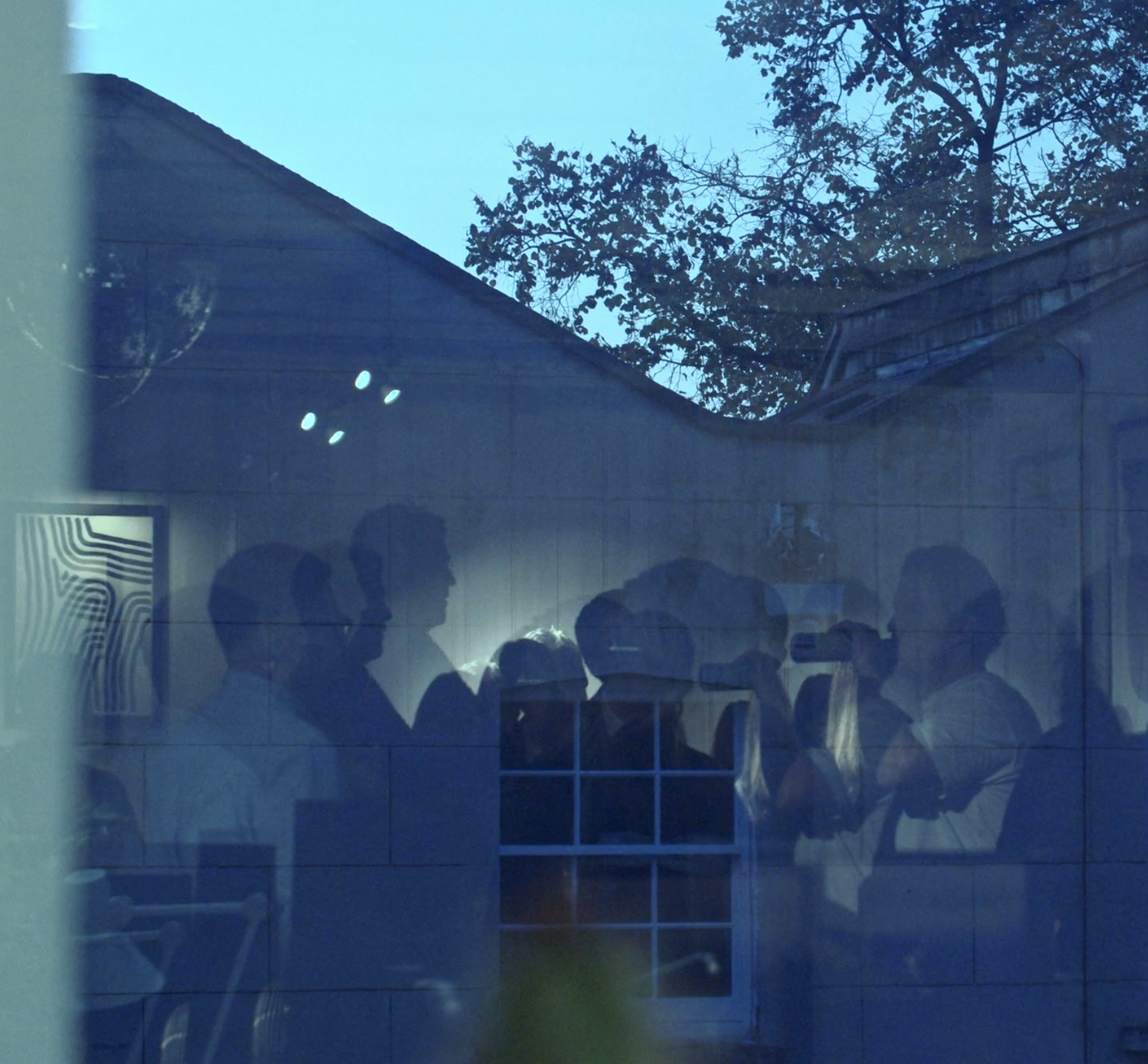Bill Amberg
on Craft

To celebrate our 20th Anniversary, we hosted an intimate gathering of friends at our studio in Oval.
As a part of this event, we invited three long-time collaborators to share one thought each on the future of the role of design in making the future more human.
First to take the mic? Bill Amberg.
Bill's been a key figure in forpeople's journey since day one: for 20 years he's been a mentor, friend, and member of our company board.
Alongside being the owner and creative director of Bill Amberg Studio —an atelier known for the highest quality innovative leatherwork available— he still brings insight and perspective as a part of our Trustee Board.
)
)
Bill's thought—
"In a rapidly-digitising economy craft will remain the essence of emotional connection."
Bill, more than just having the insight and resources to support forpeople in the early days, and guiding us as a part of our board for 20 years, you are the founder of Bill Amberg Studio, known for ultra-premium, beautiful leather goods.
You create remarkable pieces across architecture, objects, fashion, and even the automotive world. There’s a beautiful symmetry in having you join us today, as our studio celebrates its 20th anniversary in the same year that Bill Amberg Studio celebrates its 40th.
Visiting your exhibition during London Design Week, we saw a deep love for craftsmanship, attention to detail, and the handwork that goes into creating bespoke, beautiful objects. I wanted to ask—what does craft mean as we move into a future that feels increasingly digital and intangible?
What role does craft play in building that future, Bill?
Firstly, thank you for the kind introduction, and welcome to everyone. It’s fantastic to see you all. As Patrick hinted, this feels like an exciting new phase for us as forpeople. This is the first time we've opened our doors in a formal way, as we’ve always operated a bit under the radar.
So, it’s a great honour to be here. When Patrick called and asked if I’d be interested, I thought, yes, absolutely.
It’s intriguing because I’m not in the same digital world; I work in a deeply artisanal, craft-based industry focused on craftsmanship across a variety of materials and products, though leather is my primary medium.
This raised the question: what will happen as digital grows, and what does that mean for craft?
It struck me that the real issue we’re facing is truth.
As AI and digital technologies accelerate, trust in what we see and hear will erode. We may lose confidence in visual and auditory information, leading us back to the senses we instinctively trust —touch and smell. These senses, I believe, will become essential in product design, furniture, and spatial design because they offer visceral, believable experiences amid an increasingly virtual world.
To build on that, many of us came through this agency and these doors from companies that are very design-oriented.
Craft, however, often serves as an introduction to design for people. Even my two-and-a-half-year-old daughter loves creating with her hands (chiefly drawing on walls and furniture.)
What is it about crafting that seems to invite more people in, perhaps moreso than other aspects of design?
Craft is inherently human, and it’s been well documented.
If you read Richard Sennett’s The Craftsman or Juhani Pallasmaa’s The Thinking Hand, you’ll see how essential these tactile, creative acts are to us.
Many people don’t feel fulfilled in front of a screen; they find joy and comfort in making things. This process offers significant opportunity and, as designers, we should embrace it. Even if people aren’t directly involved in making something, they should still sense the human touch and craftsmanship behind it.
That tactile connection is something we need to foster.
One final thought before we wrap up: many of us are used to working in large-scale production environments —in contrast to Bill Amberg Studio, where each piece is crafted individually— we work with brands like Coca-Cola, Costa, and Logitech, where products and ideas must function at scale.
What can companies in mass production learn from your craft-focused approach?
Materials are key.
Authenticity in materials gives products a tangible, personal quality — I encourage you all to visit forpeople’s materials lab next door, where you’ll see examples of integrating craftsmanship into technology — patination creates a sense of ownership, and as digital products become more standardised, the personal touch becomes increasingly valuable.
Think about something as simple as a phone case; they’re not essential, yet everyone has one and recognises their own immediately.
This personalisation, even at a small scale, speaks to a need for individual connection with our belongings.
Thank you very much, Bill Amberg.

This is the first of a series of three conversations about the role of design on shaping a more human future.
In the following two we'll talk about evolution of CMX with Carmel Harrison of Logitech, and the importance of play with Sylvia Feichtinger of Lego.
Stay tuned.
